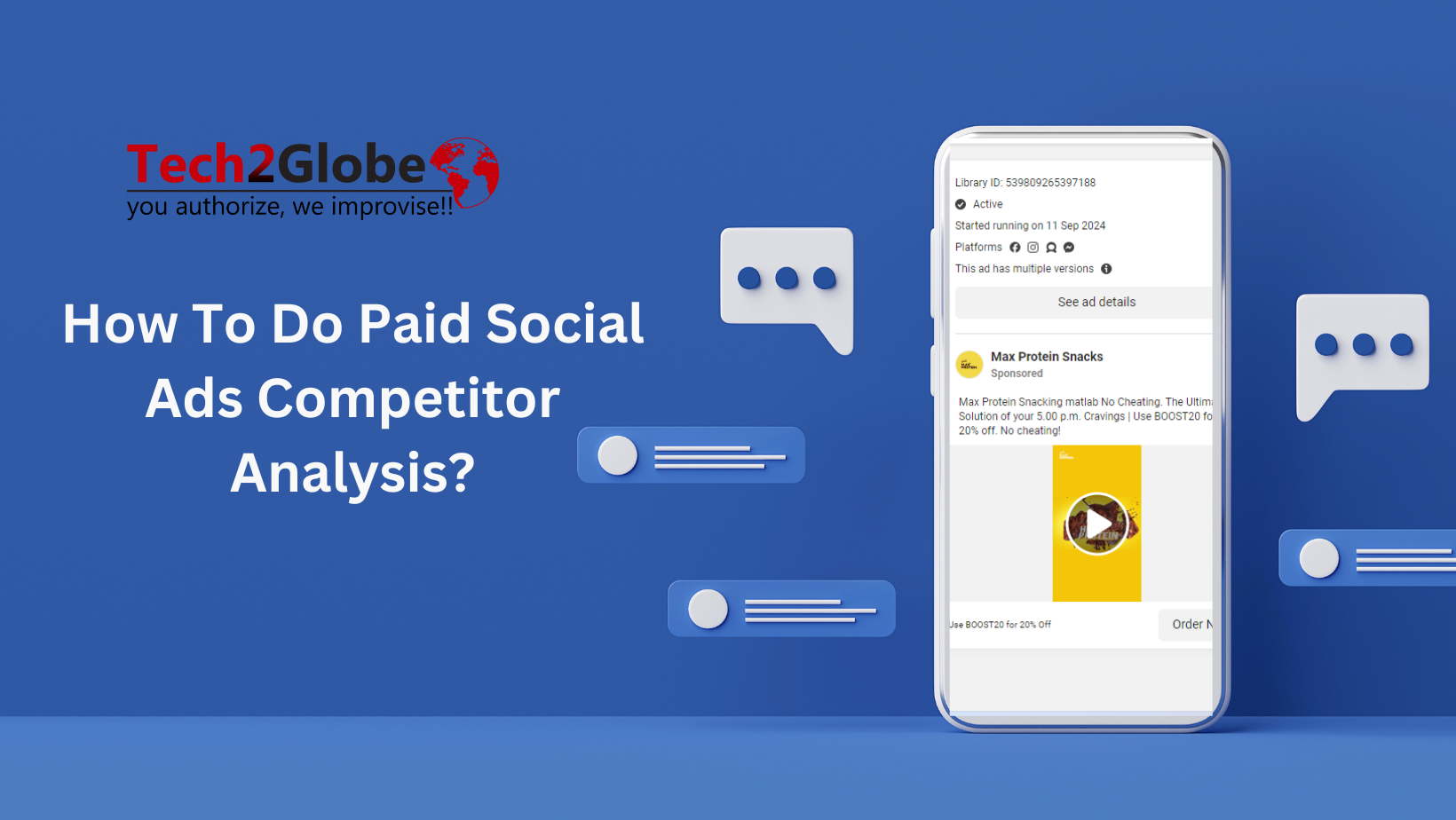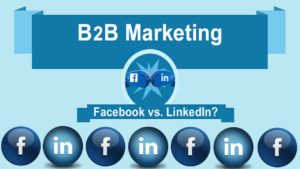Summary: Are your social media ads falling short, leaving you behind the competition? Wondering what your competitors are doing that makes their ads more successful? If yes, it’s time for a social media ads competitor analysis. Learn how to conduct this analysis across various platforms and why it’s essential for your brand’s success.
Key Takeaways
- You can make better ads for your brand by looking at the ads that other companies are running.
- Avoid making the same mistakes over and over again by analyzing your competitors. This will save you time and effort.
- Knowing what your competitors do will help you figure out what your customers really want.
- Moreover, analysis of competitors’ ads keeps you up to date on trends and gives you ideas for new projects.
When was your most recent competitor check? Are they on anything fresh? What tactics are they employing for their marketing efforts? Ignoring the activities of your competitor runs the danger of lagging. Social media advertising is the second largest segment of digital advertising, and with 26.8% of internet users aged 16 to 64 discovering products and services through social media ads, conducting a competitor ads analysis is crucial to gaining an edge over them.
When it comes to paid social ads competitor analysis, it’s important to be proactive, not just reactive, for your business to succeed.
What is social ads competitor analysis?
Social ads competitor analysis is the process of studying your competitors’ ads on social media to understand what works for them. By looking at their best ads, you can learn about their strategies, the kinds of ads their audience likes, and the messages they use. As a result, you can make ads for your own brand that work better.
The importance of competitive analysis in advertising
You need to learn and change faster than your competitors if you want to beat them and become the best in your field. By looking at the ads of your competitors, you can make your products, services, and marketing plans better.
Getting to know and understanding the advertising strategies of your competitors can help you make your brand stand out from others.
Furthermore, you can use a competitor’s ads analysis to see what works and what doesn’t in your ads. Afterward, you can make a better plan. The regular review of this process lets you keep up with changes in the market and new players to watch out for.
Following are the benefits of social media ads competitor analysis:
- Shows the keywords rivals are focussing on and their expenditure levels. Finding PPC campaign gaps for your clients finally helps them save money.
- Helps your agency modify marketing standards to identify chances to improve the strategy of your client.
- Consequently, it shows how to present your client’s company to grab their interest with ideas, changes, and new trends.
- Also, understanding the ad copy and creative approach of your competitors gives your clients a competitive edge.
How to Research Your Competitor’s Ads on Social Platforms?
1. Identifying Your Competition
Before you can do a competitor analysis for social ads , you need to know who your competitors are.
Don’t skip this step, even if you’re a well-known company that knows a lot about your competitors. New companies that move into or grow into an industry all the time could now be competitors.
You can use what your sales and marketing teams already know about competitors to find them, but some great tools can help. For instance, SEMRush lets you look into ads, and Google Ads Auction Insights enables you to compare the performance of your ads, bidding strategy, and campaign to those of your competitors.
2. Discover Competitor Ads on Facebook
A Facebook feature called Facebook Ads Library lets you see not only the ads that a page is running on Facebook but also the ads that are showing up on Instagram, Messenger, and Facebook’s Audience Network, which is where ads show up on news websites and apps.
- Visit Facebook Ads Library.
- Choose location, category, and keywords. You can use brand names as keywords to find ads from competitors.
- For example, enter “Canada,” “All Ads,” and “Hootsuite” to see Hootsuite’s Canadian ads. View all Hootsuite ads in Canada from the past 7 years, including date, type, and more.
The Ads Library allows users to view their competitors’ ads, including their timing, location, and messaging approach. Users can apply filters to search for specific media types. Furthermore, the report feature helps filter ads focusing on politics, elections, or social issues by advertiser, spending amount, or geographical location. Also, users can filter ads by location to see how direct competitors are promoting their products to target audiences, but this filter is only available by country.
3. Explore Competitor Ads on Instagram
An Instagram study found that 81% of respondents used Instagram to research products and services. Therefore, don’t you want them to find your business over a competitor’s? Create an amazing ad to attract Instagram’s 1 billion monthly active users and grow your audience.
- The Instagram app offers a Meta Ad Library. The Ad Library displays all Instagram and Facebook ads.
- To view a competitor’s Instagram ad, tap the three dots in the upper-right corner, select “About This Account,” and tap “Active Ads” to access the account’s ad library.
- Tap the magnifying glass icon in the app, enter a competitor’s name, and visit the business’s Instagram account to search directly. Click “About This Account” and then “Active Ads” to view the company’s ads in the Meta Ad Library.
Primarily, check their ad placement and what type of media they’re creating.
4. Analyze Competitor Ads on TikTok
Maybe the toughest thing to do is search competitor ads on TikTok. Though difficult to find and well hidden, TikTok Ads are not cause for concern. Here are the guidelines you should apply:
- Begin with TikTok Creative Centre.
- Visit the top right menu, select “Campaign Inspiration,” and click “Top Ads Dashboard.”
- This section lets you search by Country, Industry, Campaign Objective, and other filters.
- You can also search for “caption keywords” to see how many ads target a specific audience in your country for a product.
If you can’t find what you’re looking for in the TikTok Ads Library, consider the following: The advertiser might not be running ads or targeting your region, or your search filters may not align with any active ads. Additionally, political or election-related ads are excluded, and ads that are too recent might not appear, as the library data can take up to 24 hours to update.
5. Review Competitor Ads on LinkedIn
To track competitor LinkedIn ads, start by visiting their page. Then, access their Posts section to view their current ads. For a broader perspective, scroll down to check out older ads they’ve run.
Furthermore, to understand ad engagement, copy the ad’s URL and view likes, comments, and shares to determine which ads resonate best with the audience. This process helps you track and manage your competitor’s LinkedIn presence effectively.
6. Search Competitor Ads on X (Twitter)
The Twitter Ads Transparency Centre is a useful tool that you can use to look into your competitors’ ads. The ads transparency center can help you because it can show you how many ads are run by country or industry. However, it doesn’t show you the exact ads that your competitors are running.
Role of SMO services in competitor analysis for social ads
You’ll probably be wondering how to apply the time spent researching the ads of your competitors on social media platforms.
Fortunately, the best way to improve your social media marketing is to look at the ads that your competitors are running and copy those. Specifically, those strategies can be used in your own ads if you see some similarities between their best ones. Consequently, the longer you spend testing your ad campaigns, the less time this research will save you by the end. Through paid social ads competitor analysis, you can learn more about what makes a good ad that gets people to click on it.
Moreover, through detailed insights into ad performance, audience engagement, and trending content, our SMO services allow you to identify what’s working for your competitors.

Sarabjeet Singh is the Vice President of Operations at Tech2Globe and brings over 15 years of experience in various industries, including IoT, education, retail, government, FMCG, hospitality, and e-commerce. His leadership focuses on operational excellence and exceeding customer expectations, implementing contemporary solutions. Sarabjeet’s expertise spans e-commerce consulting, software development, data management, BPO/KPO support services, digital marketing, graphics, and startup consulting. He fosters a collaborative work environment, ensuring Tech2Globe delivers high-quality solutions.










